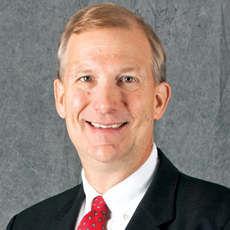
For nearly three decades, a group has existed to assist long-term care providers in their mission to provide better care by enriching ancillary services.
Operating often in the shadow of the largest nursing home group in the United States, the National Association for the Support of Long-Term Care is that hybrid organization of deep thinkers and planners that can make everyone else’s job easier. It is currently enjoying its moment in the sun, in more ways than one.
NASL — say it “N-A-S-L” rather than the less flattering “nasal” — is holding its annual meeting Sunday through Tuesday. As in recent years, it is at the same location and time as the annual meeting of the American Health Care Association and Center for Assisted Living. They share many parts of the venue and program, including some educations sessions and keynote speakers.
But NASL’s importance has been elevated beyond its usual complementary “little sibling” status this year. Having federal policies that play so strongly into your wheelhouse will do that.
Attendance numbers bear the relevance of NASL’s role. Its typical meeting attendance of 120 has swelled to at least 170 of this writing. That’s more than a 41% increase, year-over-year.
NASL Executive Director Cynthia Morton, a one-time policy guru at AHCA/NCAL herself, knows why.
“What we do is pinpoint the intersection between the clinical and the technology,” she explains. “We don’t silo discussions. We integrate them. We have higher-level discussions. It’s where the policy meets the practical. That’s what makes us a little different.”
It’s especially critical this year with the government’s newly proposed Patient-Driven Payment Model swirling around. It will be instituted next October and promises to captivate the minds and imaginations of long-term care pros every week until then, and beyond.
NASL has long been known for its access to contract therapy providers, but the group also is making a name for itself as a window unto information technology and compliance suppliers and experts. This all plays perfectly into the PDPM scenario.
Nursing and therapy staffers have to cooperate more than ever before. That’s easy to say but very difficult to execute when proud professionals get into the field of play and tend to want to do it the way they have for years. Nothing short of workflow change will be required.
Providers also should be intensely interested as to how their contract therapy companies intend to add value to their clients when the therapists aren’t being rewarded by volume, or the number of minutes working with a given patient.
“The exciting part of this, although it’s also scary, is the value part of the equation can move to the top of the list, and there’s not the worry about counting minutes,” Morton says. Her group will hold a joint session with AHCA, delving into nursing, therapy, compliance and IT matters.
The richness of the content at NASL’s 29th annual meeting at the San Diego Convention Center will be undeniable.
“We can have an integrated discussion, as well as look at how contracts have to change. We’ll also have IT vendors in the room. They’ll have their clinical specialists, who help write the software used,” Morton notes.
The MDS, especially section GG, will get a thorough going-over, of course.
Providers will be informed that assessors have to look at a patient’s “usual performance” over three days — not just how a walk is taken for 20 feet in a therapy session. This evaluation for the MDS is where the nurse-therapist collaboration will really be needed.
“We’ll be talking about that kind of integration. It’s kind of like where the rubber meets the road,” Morton observes. “We’re not doing nuts-and-bolts. We’ve already had PDPM 101. We want to talk about how you interpret this, what the insights are.”
Such heady material is admittedly not for every operator. It is for those “willing to go … the next step,” Morton proudly points out.
And few extra steps toward NASL sessions this weekend would be a very good idea indeed.
Follow Editor James M. Berklan @JimBerklan.




